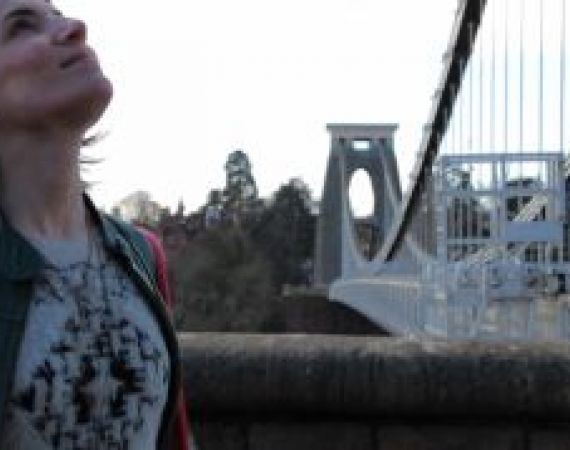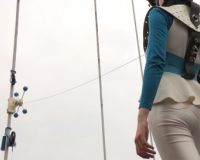Di Mainstone
Di Mainstone is an artist and founder of the Human Harp, a network of creatives who's collective aim is to transform suspension bridges into giant harps!

Di Mainstone
Projects

Human Harp
Human Harp is an instrument that clips to suspension cables, enabling us to hear and play a bridge’s song.Di Mainstone is an artist and also founder of the Human Harp, a network of creatives who's collective aim is to transform suspension bridges into giant harps! The New York Times recently featured Di as one of the "new generation visionaries" in the international digital arts scene. This year she was invited to be a global ambassador of audio innovators Sennheiser as part of their international Momentum campaign, which hopes to inspire young people to explore sound in creative ways.
An artist in residence at Queen Mary University London, Di collaborates with researchers from the Centre for Digital Music and Media Arts and Technology group, to develop new musical instruments that are inspired by the body, transforming physical movement into sound via digital technology. Di has invented the term “Movician” to describe the player of her wearable instruments - a hybrid artist who explores and composes sound through movement.
She has been able to expand her research into sound and technology through international residencies at institutes such as Eyebeam Centre for Art and Technology in New York, XS Labs in Montreal, V2_Institute for the Unstable Media in Rotterdam, The Banff Centre in Canada and the Bemis Centre in Omaha. Gathering this knowledge she has created a pioneering method of building wearable sonic instruments on the body of dancers, for which she has coined the term “body-centric design”.
Di has joined a range of international institutes as visiting tutor, where she has developed workshops which invite students to build wearable sonic devices on the body, moving, testing and enhancing as they go along. These workshops have taken place at institutes such as Copenhagen Institute of Interaction Design, London College of Fashion, Queen Mary University of London, Columbia University, New York University and Concordia University in Montreal to name a few.
Di’s sonic devices have been performed at home and abroad, most notably at The Roundhouse, The V&A, The Barbican, The National Portrait Gallery, Eyebeam NYC, The Brooklyn Bridge and the Swedish National Touring Theatre. Each happening is unique, revealing openings for audience and performer encounters. Her work has been featured in media outlets such as BBC World Service, BBC News, New York Times, The Observer, The New Scientist, Time Out and Dezeen. Di’s work can also be seen in films, which she writes and directs.